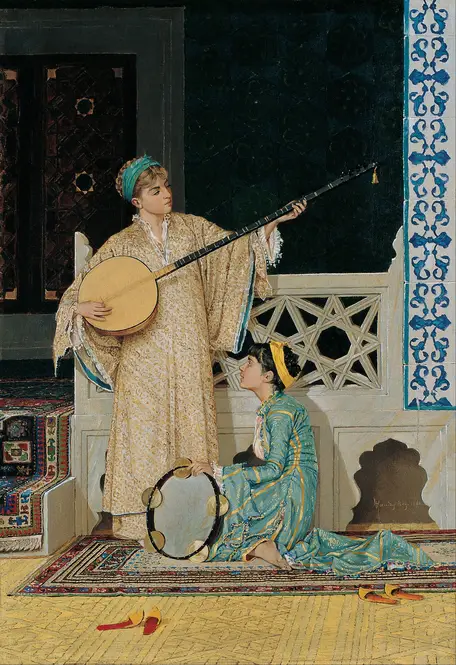-
-full.webp)
Young Woman Reading (c 1880)
A young woman lost in thought while reading, her expression caught between concentration and quiet yearning.
-

Two Musician Girls
A vibrant portrayal of two young musicians lost in their craft, their connection painted with warmth and motion.
